News
Find out more about our Bats and Climate Change Cost Action in our new video
What's been going on already...
Workshop and training school on bat monitoring techniques
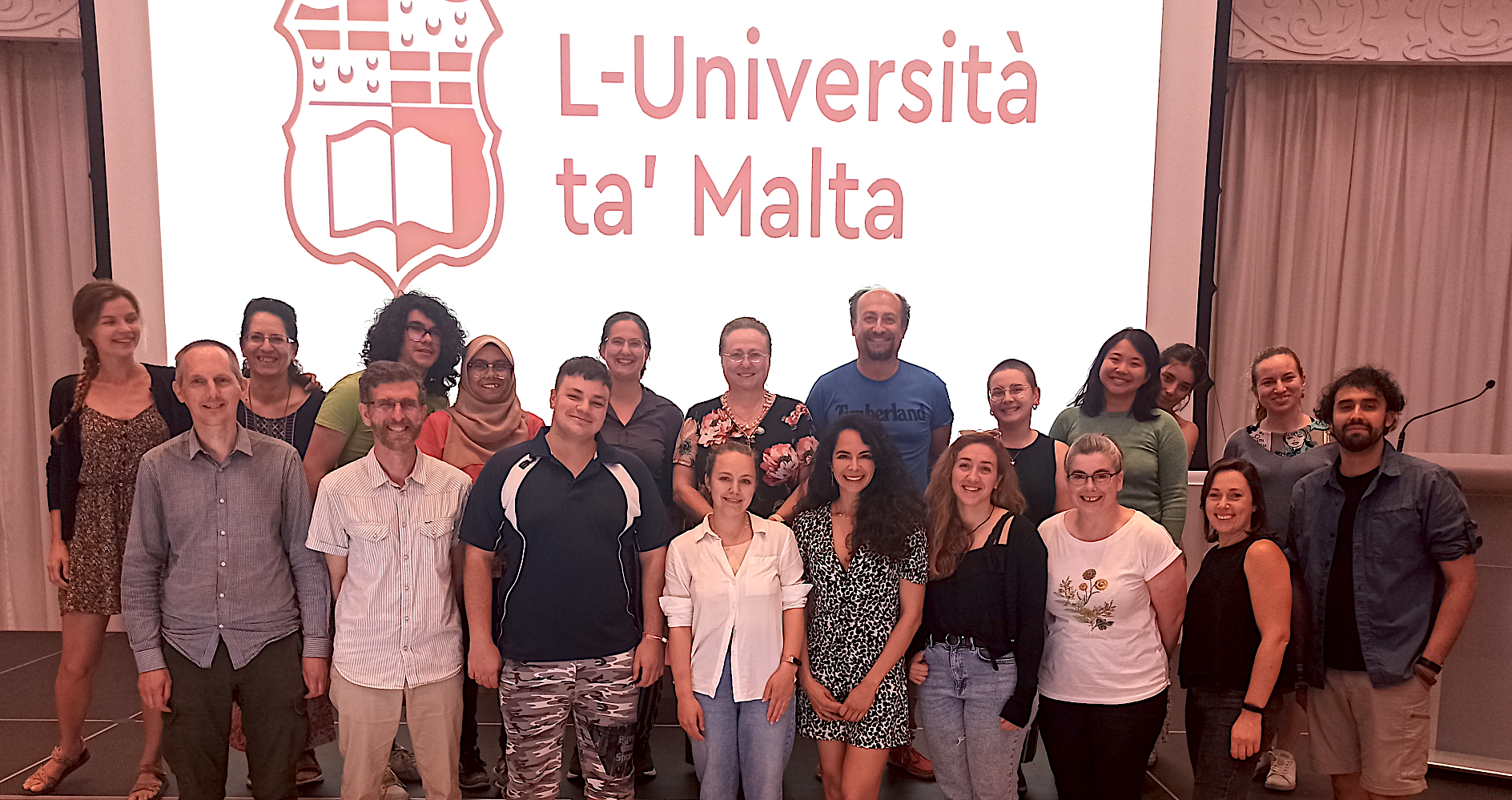 An international workshop and training school were hosted by the University of Malta in June 2022 to develop expertise in bat monitoring techniques vital to monitoring the impacts of climate change on bats.
An international workshop and training school were hosted by the University of Malta in June 2022 to develop expertise in bat monitoring techniques vital to monitoring the impacts of climate change on bats.
Case studies and methods were presented, and participants had the opportunity to run an extended acoustic field survey followed by analyses of the data recorded. This was possible through local bat research experience that has been operative for over two decades by the Conservation Biology Research Group of the Department of Biology, Faculty of Science at the University of Malta, which has been following bat populations around the Maltese Islands, some of which declining seriously in numbers. The events were led by Prof Danilo Russo, Prof Adriana Vella, Dr Clare Marie Mifsud and Dr Adrià López-Baucells.

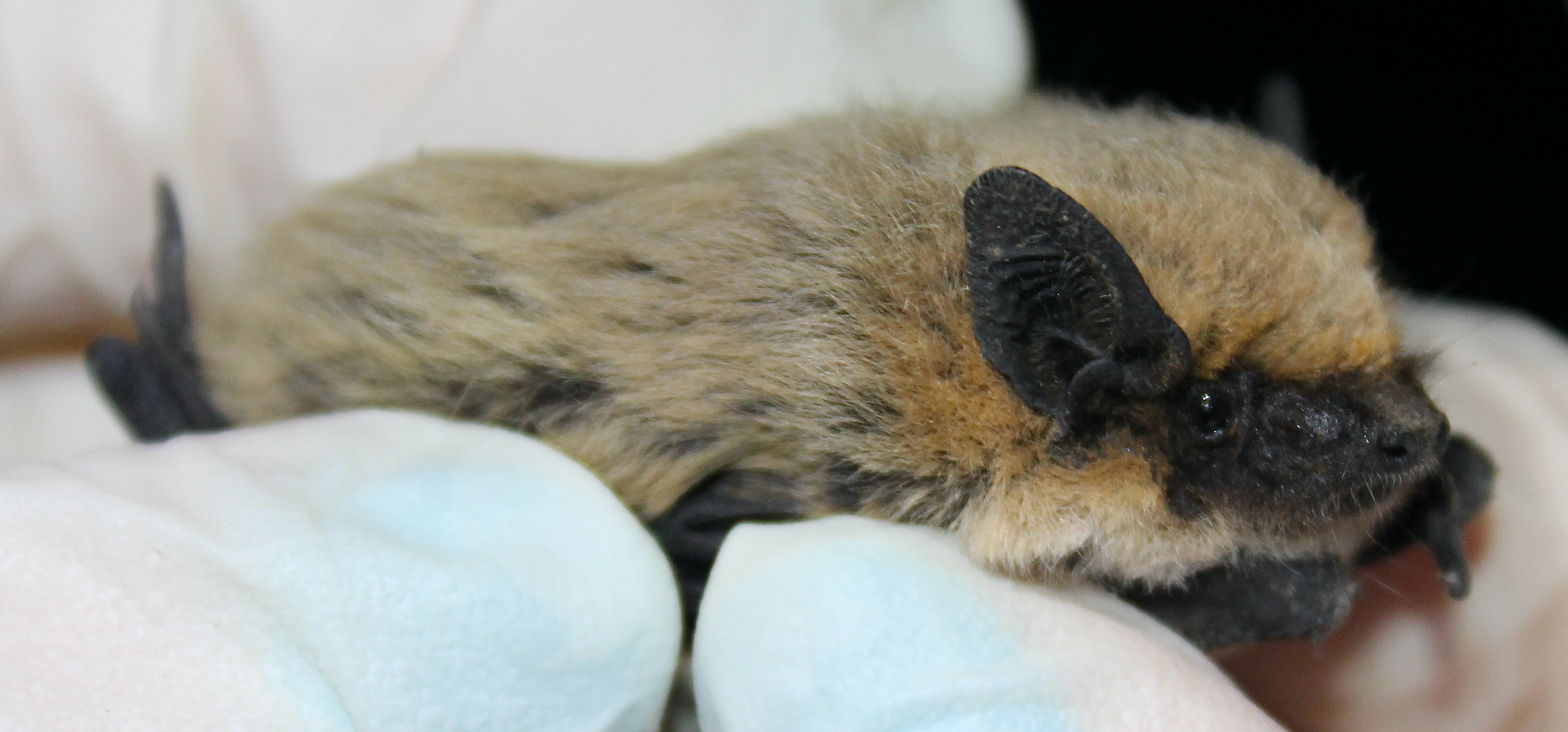
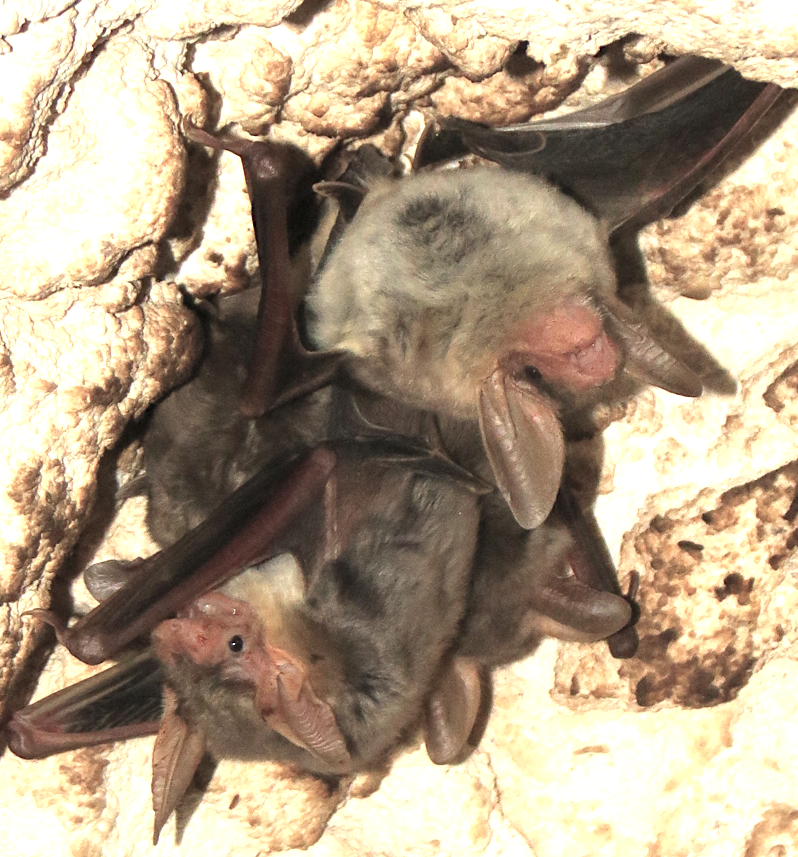

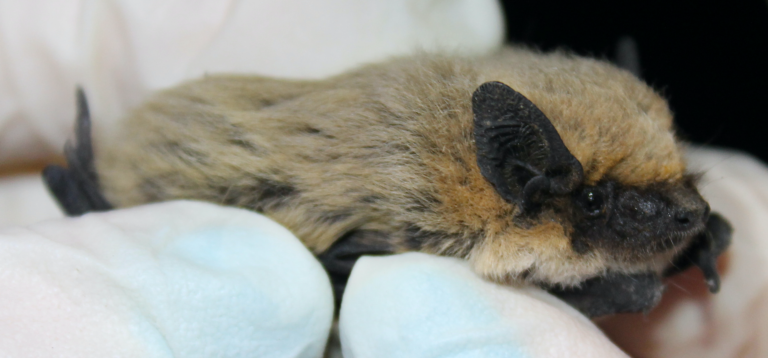
Virtual Mobility grants as tools for improving Species Distribution Models
A short e-interview with Francisco Marques, Researcher at Research Center in Biodiversity and Genetic Resources, Portugal
February 2022
How important are bats? Does their existence affect our daily lives?
Bats are vital components of healthy ecosystems and play a major role in the provision of valuable ecosystem services, such as pest control. Our lives would be significantly impacted if we found ourselves in a world without bats. Our crops could be devastated by pests. Plants that depend on bats, particularly in tropical and desert climates, would be seriously affected or threatened with extinction.
Are bats likely to be affected by climate change?
Bats are expected to be impacted by climatic changes due to the modification of environmental conditions, which may not be suitable for all bat species. It is therefore expected that the distribution of bat species will change and that a range contraction will be observed for many species. To take appropriate conservation action it is important to know how these distributions will change and where they will be more severe. Understanding this is one of the major goals of the COST Action Bats and Climate Change network.
How can a COST Action Virtual Mobility Grate help us to better understand bat distribution?
Knowing current environmental conditions that shape bat species distribution, it is possible to forecast future species distribution. Using Species Distributions Models (SDMs) is one way of achieving this, which was one of the objectives of my Virtual Mobility (VM) Grant.
Using the grant, I developed distribution models for a total of 37 bat species, covering all of Europe, considering present and future climate scenarios. Taking advantage of these models, it was possible to identify the species niche contraction and establish which areas in Europe are more sensitive to climatic changes. This information can be used to inform and improve conservation measures in sensitive areas in order to mitigate impacts and could help to protect areas that will provide crucial connectivity between present and future habitats.
In your experience, what other benefits were there to receiving the VM Grant?
VM grants are an important tool created by COST to overcome the present challenges posed by the pandemic, such as researchers finding it more difficult to travel and network. The VM grants ensure capacity building and virtual collaboration between international researchers to achieve Action goals. In my personal opinion and experience, virtual collaboration is a good tool for developing a number of skills, enabling the exchange of knowledge, and connecting people. Due to the current disruption in international travel due to the pandemic, VM grants and online collaboration provide great alternatives to face-to-face meetings. For me it presented an excellent opportunity to contact leading experts in bat and climate change research and to work together to achieve important Action goals.
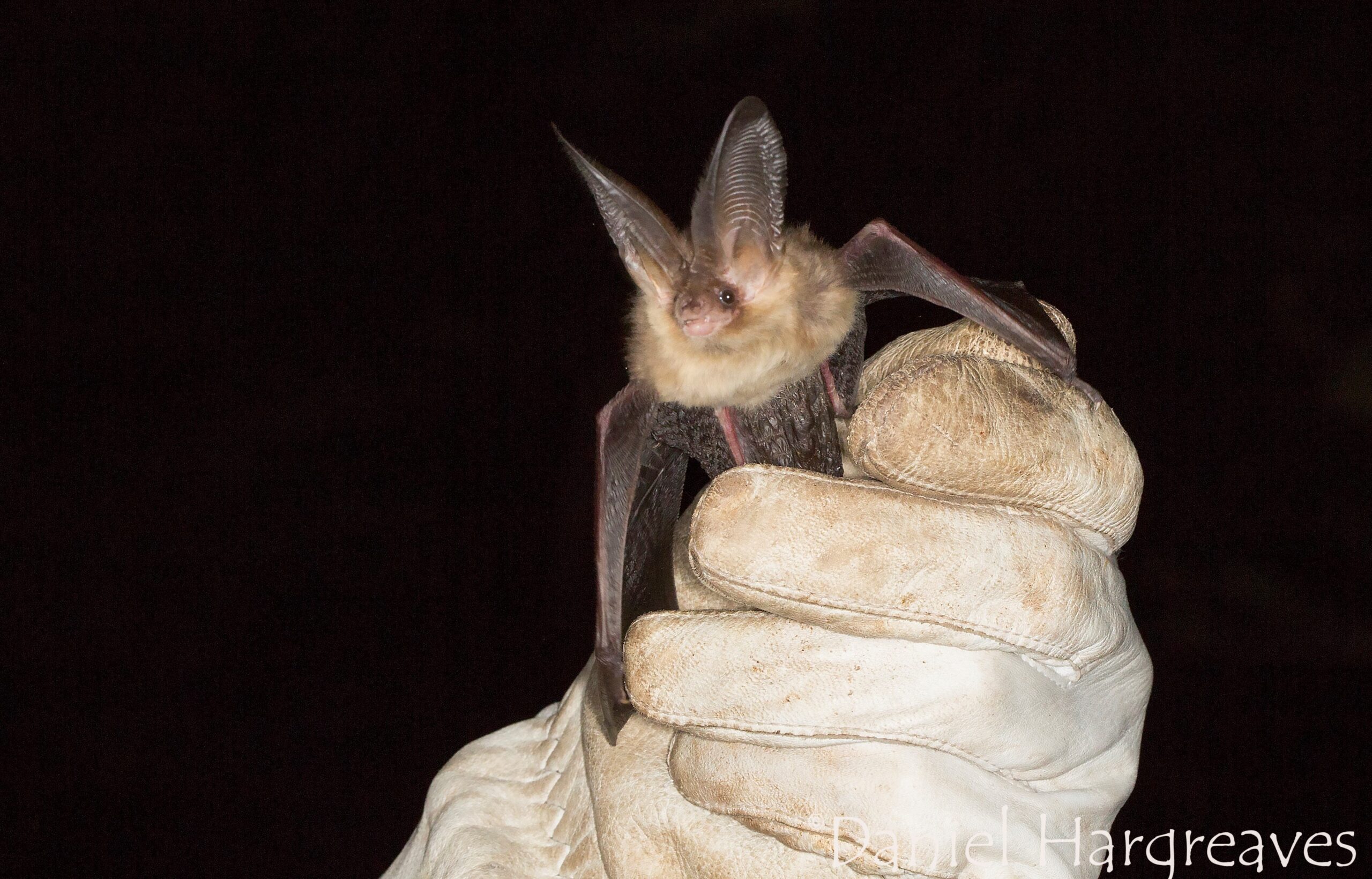
Francisco used the VM grant to develop SDMs that assess species such as the brown long-eared bat (Plecotus auritus). Photo credit: Daniel Hargreaves.
Monitoring Hibernating Bats
Photos: Monitoring greater horseshoe bats (Rhinolophus ferrumequinum) in south-western England.
By Fiona Mathews, Professor of Environmental Biology at the University of Sussex, UK
February 2022
At this time of year, bat workers across Europe are putting on their helmets and descending underground to monitor our populations of hibernating bats. Bats will use both natural caves, such as those found in karstic limestone, and also artificial structures such as mines, disused railway tunnels, underground fortification networks, and stand-alone bunkers. Some of these sites are tiny (and may simply be a crevice in a rock face) whilst others extend for tens of kilometers underground and can provide a wide variety of thermal conditions. In general, bats tend to select sites with stable temperatures, particularly in the depths of winter, since waking up from hibernation at a time when no food is available could be catastrophic. They also prefer sites with reasonably high humidity as this avoids the need to wake up to drink (those huge wings provide a large area through which a hibernating bat lose water).
Hibernation sites are unfortunately threatened across Europe. Concerns about safety have led to the entrances to many being sealed; and while legal protection has helped to reduce the scale of this issue, the increasing popularity of underground exploration (particularly by those outside recognised caving groups) presents a growing threat. The heat emitted by a person standing beneath a hibernating bat can arouse the animal from torpor within minutes: this uses up valuable fat that the bat has stored to meet its energy needs over winter, and if the process is repeated several times, the results can be fatal. Finally, climate change is adding a new threat. In Portugal, for example, sites that were previously used by large numbers of bats have been deserted because the winter temperature is consistently above ‘normal’.
Long-term studies in the underground fortification system of Nietoperek, Poland, and stand-alone bunkers in the same region, showed that during a series of warmer winters barbastelle bats (Barbastellus barbastelle) moved from the larger (warmer) system to cooler bunkers, indicating that climate change is likely to affect bat behaviour. Whist the barbastelle bat uses hibernation sites close to its summer roost, other species of bats, such as Nathusius’s pipistrelle (Pipistrellus nathusii) can travel many hundreds of miles between its breeding and hibernation sites. Therefore, changes in hibernation behaviour triggered by climate change could potentially have cascading effects on the distribution of bats across the whole continent. One of the objectives of the Bats and Climate Change Cost Action is therefore to establish a monitoring network across Europe that will enable such changes to be detected.
Species Distribution Modelling Training School
By Katie Allan, PhD Researcher at the University of Sussex, UK
October 2021
Earlier this month, I attended an international training school on Species Distribution Modelling (SDM) organised as part of the COST Action for Bats and Climate Change. The workshop opened with an introduction to SDMs by Luca Santini. A range of different models are available, including envelope approaches, regression-based analysis, and maximum entropy modelling, and we discussed how to select the best approach depending on your research aims.
I found the use of SDM modelling in past/future projections, and the importance of the difference between interpolation and extrapolation when doing so, to be of particular interest. For example, SDMs are often used to predict how species may react to future climate change scenarios, with maximum and minimum temperature being two of the variables often considered. I had not appreciated that future projections must be made based on the species’ current or past distribution, within known values of these variables, and that moving outside of these ranges can be invalid (despite the possibility of adaptation): if a species’ known temperature range is between 2⁰C and 23⁰C, then it is impossible to predict how the species will react to temperatures above or below these values.
The morning continued with case-study seminars on different applications of SDMs, where Ana Benítez-López explained how multi-scale approaches can be used to determine the habitat suitability of a species. Francisco Amorim presented on combining SDMs with Spatial Conservation Prioritisation tools that can optimize conservation practices.

The afternoon entailed of a practice session, focusing on running SDMs in R. We were given a data set, which had been collected by Orly Razgour, containing presence-only data on two species of bat which are distributed across the Iberian Peninsula, Myotis crypticus and Myotis escalerai. We were also given raster layers on current and future projections of some environmental variables, including maximum day temperature, temperature range, and average precipitation. We were set the challenge of producing projected species distribution models based on the future climatic variables and the species ecology and plotting them on appropriate maps. Working through this practical training school as a group helped increase my understanding of the process and was a great opportunity to share our opinions of the best methods and approaches.
The second day of the training school comprised of five different seminars from guest speakers, each of which focused on different applications of SDM modelling. I was particularly interested in Orly Razgour’s presentation on the application of genetic sequence data in SDM modelling; this showed how consideration of genetic variation in ecological niche models can make forecasting of species’ ranges more informative. In the example presented, Gene Expression Analysis was conducted to determine climate-driven genetic variation, which was based on allele frequencies (measured at Single Nucleotide Polymorphisms (SNPs): variations in a genome at a single base pair) and local climatic conditions (maximum temperature of the warmest month and precipitation of the warmest quarter). This analysis was used to determine which SNPs in the bat genomes were associated with these climate variables, thereby identifying individuals that were climate-adapted. When no genetic variation was considered, under future climate scenarios Myotis escalerai are projected to lose 47% of their range, however, when hot-dry and cold-wet adapted individuals were considered, this number was reduced to 19% loss. I thoroughly enjoyed this training school on SDMs, and I hope to apply these new techniques that I have learned to my own research project on the landscape permeability of greater horseshoe bats.

Katie will use skills learned in the training school to examine landscape permeability of the greater horseshoe bat. Photo credit: Katie Allan.
DNA Metabarcoding workshop held in Portugal for early-career researchers
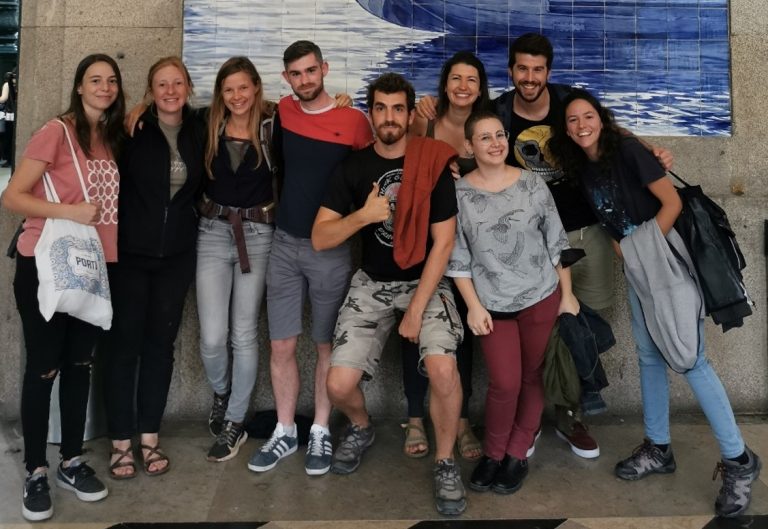
By Thomas Curran, PhD Researcher in Waterford Institute of Technology, Ireland
October 2021
DNA metabarcoding is a powerful tool which can be used to describe the broad suite of ecosystem services that are provided by insectivorous mammals, such as bats. Many studies have already used this next generation sequencing technique to investigate the diet of bats, yielding incredible results. The results are important to conservation and policy-making because they give a full description of the diet, and are considerably more accurate than traditional methods based on microscopy.
I recently attended a training school organised by the COST Action Programme “Climate Change and Bats” on DNA metabarcoding. The event was held at the Research Centre in Biodiversity and Genetic Resources (CIBIO) Vairão, Portugal, organised by Dr Vanessa Mata, Dr Owen Wangensteen and other members of the Cost Action network. The training school took us on a bioinformatics journey, taking mountains of indescribable raw DNA sequences and creating visual outputs describing the data. We used a DNA metabarcoding pipeline designed by Owen Wangensteen named MJOLNIR and, using a Linux server and R Studio, we learned how to analyse and organise metabarcoding data into taxonomically assigned molecular operational taxonomic units (MOTUs). We created attractive graphics to display results, such as the potential variations in diet according to sex, the presence/absence of pest species, the percentage frequency of a variety of taxa occurrence, and niche analysis overlaps.
The workshop was open to early-career researchers from all over Europe who share research interests in bat conservation. For many of the attendees this was the first time they were able to take part in a face-to-face training event due to COVID-19 related travel restrictions. This provided participants from Bulgaria, Germany, Ireland, Italy, Portugal, and Spain with a valuable networking opportunity, enabling them to make connections in the field of molecular ecology and to create future collaborations with like-minded individuals.
I plan to use the skillset acquired at this training school to further investigate the diet of the lesser horseshoe bat (Rhinolophus hipposideros), one of Europe’s most highly protected bat species, in Ireland. I am currently assessing differences in lesser horseshoe diet according to sex and sampling location, as well as the identification of predated pest species. By analysing bat diet in this format, I hope to make an impact on conservation efforts for the lesser horseshoe bat via the provision of data, which will better inform decision-makers. I plan to publish further findings soon, building on our previous article published in the Journal of Mammalian Biology: https://link.springer.com/article/10.1007%2Fs42991-021-00115-4
Funding Acknowledgments
Thomas’s PhD is supported by a Waterford Institute of Technology and Environmental Protection Agency (EPA) Co-Fund PhD Scholarship, funded under the EPA Research Programme 2014–2020. The EPA Research Programme is a Government of Ireland initiative funded by the Department of the Environment, Climate and Communications. It is administered by the EPA, which has the statutory function of co-ordinating and promoting environmental research. Funds to support DNA metabarcoding were provided by Bat Conservation Ireland and a University of Salford Internal Research Award.
Prof. Danilo Russo, chair of @batstothefuture will be talking ‘Bats and Climate Change’ in a webinar on Monday 12th February at 8pm CET, 7pm GMT.
Register:
https://us02web.zoom.us/meeting/register/tZ0qcOuopzkjGdzitR5eHKaZPDnnDoHPqSfd
After registering, you will receive a confirmation email with a Zoom link.
Many of you have already read our review of the effects of the #ClimateCrisis on European #bats!
🦇Our recommendations require collective action and are a call to action for bat conservationists! 🦇
Find details of this work at https://climbats.eu/ and our MUST READ report!
Seguim informant-vos de les contribucions de @Ratpenats_Cat en estudis internacionals punters per la conservació de 🦇. Aquesta vegada amb una participació activa dins el projecte @COSTprogramme - @batstothefuture per part de @dlobo_wildlife @TuneuCarme i @adria_baucells.
#bats
🦇How will the #ClimateCrisis affect European conservation for #bats?🦇
What about bat distribution, behaviour and survival?
How is this going to affect our ecosystems?
And what must we do about it?
All you NEED TO KNOW is in our comprehensive review!
https://climbats.eu/wp-content/uploads/lay-summary.pdf
IT'S HERE! The Comprehensive Review of the Effects of Climate Change on European Bats!🦇
Compiled from contributions of 41 researchers, we have the NEED TO KNOW predictions and recommendations on how to best manage vitally important #bats across Europe.
https://climbats.eu/wp-content/uploads/lay-summary.pdf
Rice is a world food staple, but rice borer moths can decimate this crop.
Research led by Dr. Adrià López-Baucells highlights how making homes for soprano pipistrelles #bats can help control this pest and potential save farmers around 93–110 €/ha/year. https://www.merlintuttle.org/bats-aid-rice-farmers-in-spain/
